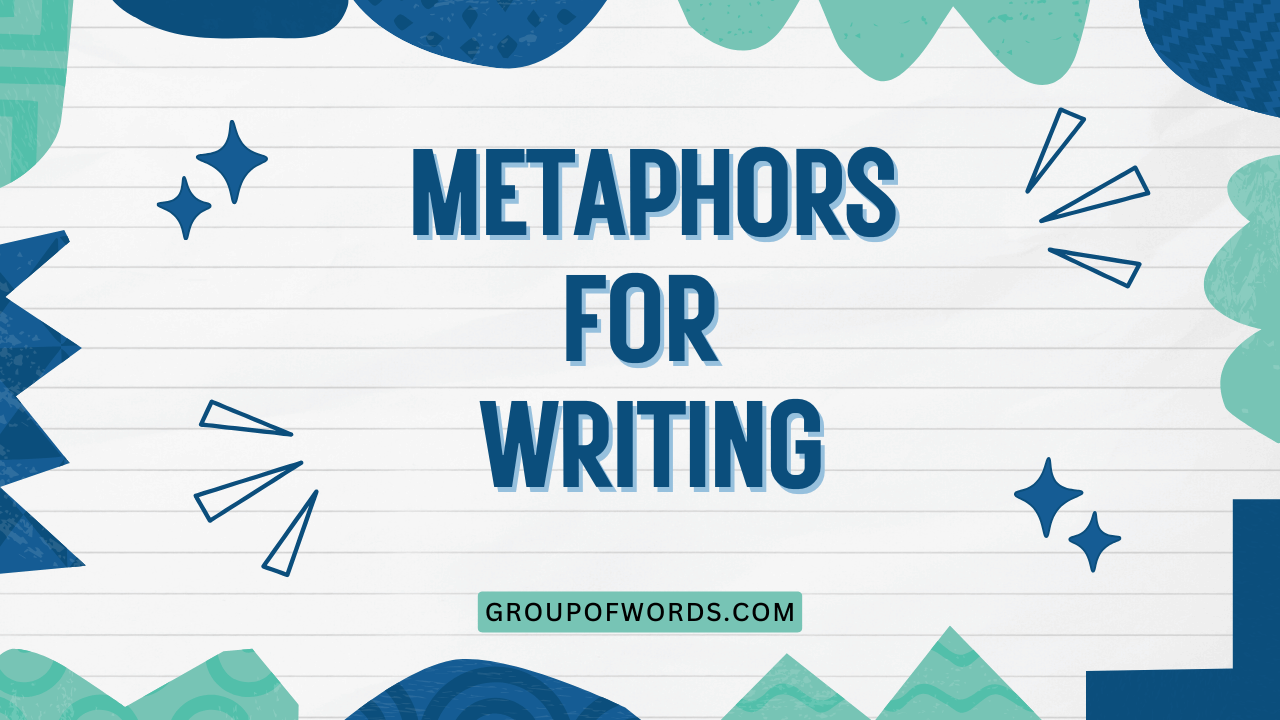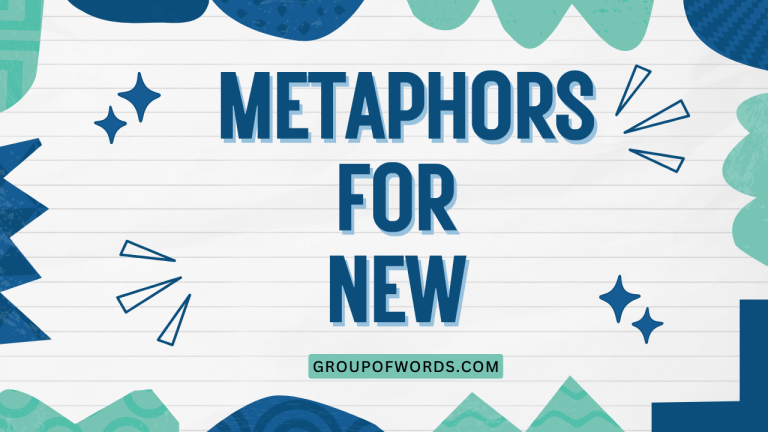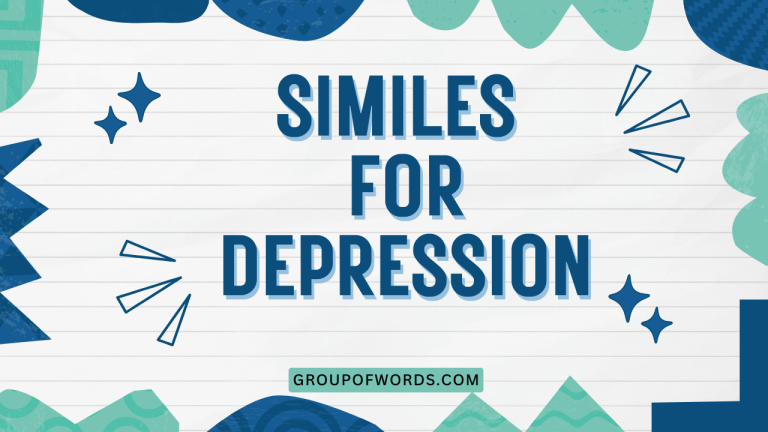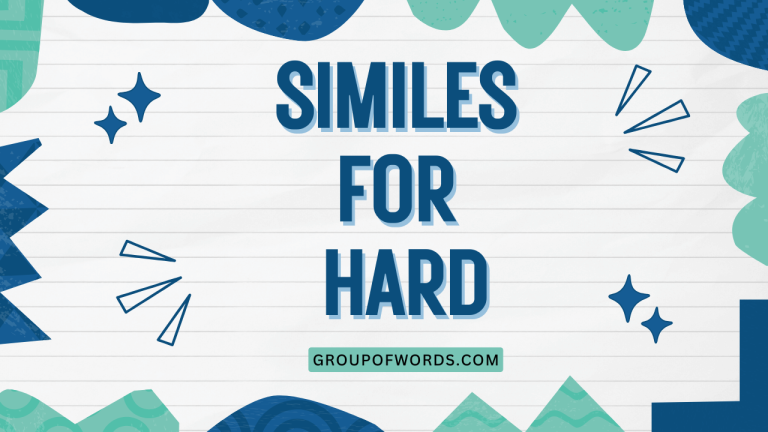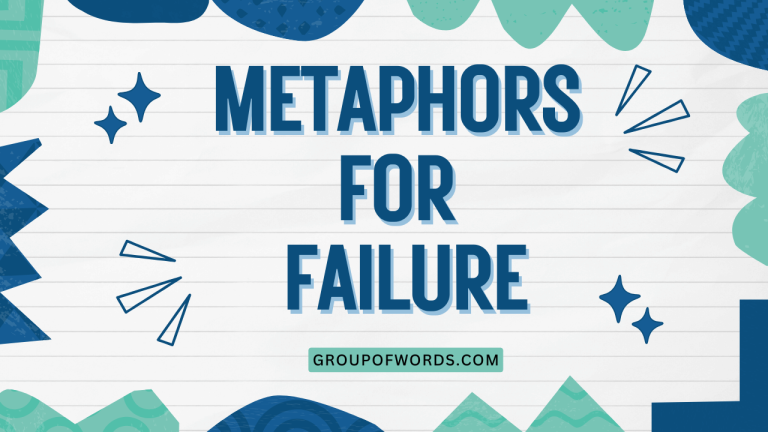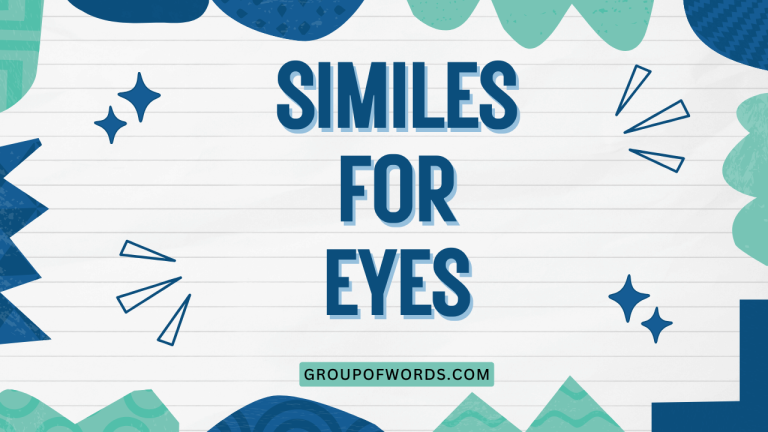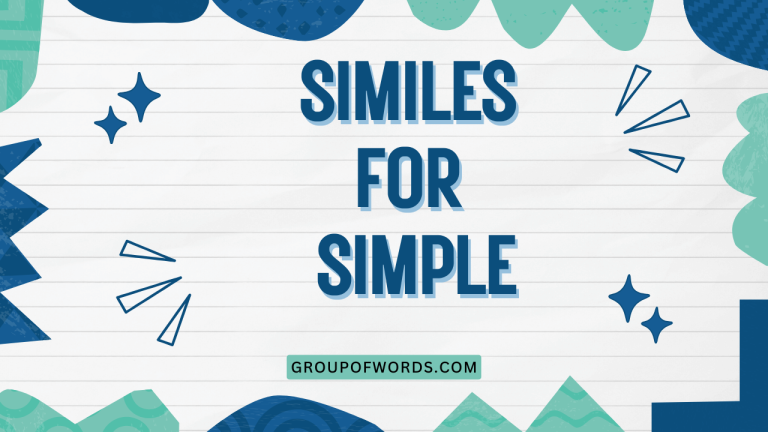Unlocking the Power of Language: Metaphors for Writing
Metaphors are more than just literary devices; they are fundamental tools that shape our understanding and expression. In writing, metaphors serve as bridges, connecting abstract ideas to concrete images, making complex concepts accessible and engaging.
Mastering the art of using metaphors can transform your writing from ordinary to extraordinary, adding depth, color, and resonance to your words. This article explores the diverse world of metaphors in writing, providing a comprehensive guide to their definition, structure, types, usage, and common pitfalls.
Whether you are a student, a professional writer, or simply someone who loves language, this guide will equip you with the knowledge and skills to harness the power of metaphors and elevate your writing to new heights.
This article is designed for anyone seeking to improve their writing skills, enhance their creative expression, or gain a deeper understanding of the English language. It will be particularly beneficial for students learning about literary devices, writers looking to add more depth and imagery to their work, and English language learners aiming to master the nuances of figurative language.
Table of Contents
- Definition of Metaphor
- Structural Breakdown of a Metaphor
- Types of Metaphors
- Examples of Metaphors
- Usage Rules for Metaphors
- Common Mistakes with Metaphors
- Practice Exercises
- Advanced Topics in Metaphors
- Frequently Asked Questions
- Conclusion
Definition of Metaphor
A metaphor is a figure of speech that directly compares two unrelated things without using “like” or “as.” It asserts that one thing is another, creating a connection between them to highlight a shared quality or characteristic. Unlike similes, which use explicit comparison words, metaphors imply the resemblance, making the comparison more subtle and often more powerful.
The primary function of a metaphor is to provide a new perspective or understanding of a concept by associating it with something familiar or concrete. It allows writers to convey complex ideas in a vivid and memorable way, engaging the reader’s imagination and creating a deeper connection with the text.
Metaphors are essential tools for enriching language, adding layers of meaning, and enhancing the overall impact of writing.
Metaphors can be found in virtually every form of communication, from everyday conversations to complex literary works. They are integral to how we understand the world, shaping our thoughts and perceptions.
In writing, metaphors are used to:
- Add vividness and imagery
- Simplify complex ideas
- Evoke emotions
- Create deeper meaning
- Enhance the reader’s engagement
Structural Breakdown of a Metaphor
Understanding the structure of a metaphor is crucial for effectively using it in writing. A metaphor typically consists of two main elements: the tenor and the vehicle. The tenor is the subject being described, while the vehicle is the object or concept to which the tenor is compared.
The tenor is the underlying idea or concept that the metaphor is trying to convey. It’s the thing you’re actually talking about. For example, in the metaphor “Time is a thief,” the tenor is “time.”
The vehicle is the image or concept that is used to represent the tenor. It’s the thing that the tenor is being compared to. In the same example, “Time is a thief,” the vehicle is “a thief.” The metaphor works because it suggests that time, like a thief, steals something valuable (our moments).
The ground is the shared characteristic or quality between the tenor and the vehicle. It’s the basis for the comparison. In “Time is a thief,” the ground is the idea of something valuable being taken away stealthily and without permission.
Consider the metaphor: “The world is a stage.”
- Tenor: The world
- Vehicle: A stage
- Ground: Life involves roles, performances, and dramatic events.
By understanding these components, writers can create more effective and meaningful metaphors that resonate with their audience. Recognizing these parts also helps in analyzing and interpreting metaphors used by others, thus deepening comprehension and critical thinking skills.
Types of Metaphors
Metaphors come in various forms, each with its unique characteristics and applications. Understanding these different types can help writers choose the most appropriate metaphor for their specific purpose.
Standard Metaphors
Standard metaphors are common and widely recognized comparisons that have become ingrained in everyday language. They are easily understood and readily accepted, making them effective for conveying familiar ideas in a concise way.
These metaphors often lose their initial impact over time due to overuse, but they remain useful for clarity and simplicity.
Examples of standard metaphors include: “The heart of the matter,” “A sea of troubles,” and “A light in the darkness.” These metaphors are so common that they often go unnoticed, yet they contribute to the richness and expressiveness of the English language.
Extended Metaphors
An extended metaphor is a metaphor that is developed over several lines, paragraphs, or even an entire work. It allows for a more detailed and nuanced comparison between the tenor and the vehicle.
By elaborating on the initial comparison, writers can create a richer and more complex understanding of the subject.
Extended metaphors are often used in poetry and literature to create vivid imagery and explore deeper themes. They provide an opportunity to delve into the various aspects of the comparison, revealing hidden connections and insights.
An example could be a poem where life is consistently compared to a journey, with each stanza exploring different stages and challenges of that journey.
Mixed Metaphors
A mixed metaphor combines two or more inconsistent metaphors in a single expression, often resulting in a nonsensical or humorous effect. Mixed metaphors typically occur when a writer loses track of the original comparison and introduces conflicting imagery.
While sometimes used intentionally for comedic effect, mixed metaphors are generally considered a writing error.
An example of a mixed metaphor is: “Let’s nip it in the bud before it snowballs.” This combines the metaphor of stopping something small from growing (nipping it in the bud) with the metaphor of something gaining momentum and size (snowballing). The resulting image is confusing and illogical.
Dead Metaphors
Dead metaphors are metaphors that have become so overused that they have lost their figurative meaning and are now considered literal expressions. These metaphors were once creative and insightful, but through constant repetition, they have become clichés.
While dead metaphors are generally acceptable in everyday language, writers should avoid them in formal writing to maintain originality and impact.
Examples of dead metaphors include: “Head of the class,” “Falling in love,” and “Time flies.” These expressions are so common that we rarely think of them as metaphors, but they originated as figurative comparisons.
Conceptual Metaphors
Conceptual metaphors are fundamental metaphors that underlie our thinking and language. They are often unconscious and shape the way we understand abstract concepts.
Conceptual metaphors are pervasive and influence how we reason, communicate, and interact with the world.
A classic example of a conceptual metaphor is “ARGUMENT IS WAR.” This metaphor influences how we talk about arguments, using phrases such as “winning an argument,” “defending your position,” and “attacking their weaknesses.” Other common conceptual metaphors include “TIME IS MONEY” (e.g., “spending time,” “saving time”) and “IDEAS ARE FOOD” (e.g., “a half-baked idea,” “digesting information”).
Examples of Metaphors
To illustrate the various types and uses of metaphors, here are several examples categorized by context and function.
The following table provides a range of examples for standard metaphors, showcasing their common usage and easy comprehension:
| Standard Metaphor | Explanation |
|---|---|
| The world is a stage. | Life is like a play, with people acting out different roles. |
| Time is a thief. | Time steals our youth and opportunities. |
| He is a lion in battle. | He is brave and fierce in combat. |
| Her heart is gold. | She is kind and generous. |
| The city is a jungle. | The city is dangerous and competitive. |
| Life is a rollercoaster. | Life has many ups and downs. |
| He has a heart of stone. | He is emotionless and unfeeling. |
| She is the apple of his eye. | She is cherished and adored. |
| Arguments are walls. | Arguments create distance and separation. |
| The news was a dagger to his heart. | The news caused him great emotional pain. |
| Ideas are seeds. | Ideas need time to grow and develop. |
| Books are portals. | Books transport us to other worlds and experiences. |
| Love is a battlefield. | Love involves struggles and conflicts. |
| Education is a ladder. | Education helps us climb to higher levels of achievement. |
| He is a night owl. | He is most active at night. |
| The internet is an ocean. | The internet is vast and full of information. |
| Her voice is music to his ears. | Her voice is pleasing and enjoyable. |
| The project is a marathon. | The project requires endurance and persistence. |
| His words are bullets. | His words are sharp and hurtful. |
| Sleep is a balm for the weary. | Sleep is a soothing and restorative experience. |
| Children are sponges. | Children absorb information quickly and easily. |
| He’s a wolf in sheep’s clothing. | He appears harmless but is actually dangerous. |
| The company is a sinking ship. | The company is failing and in trouble. |
This table illustrates extended metaphors, demonstrating how a single comparison can be expanded upon to create a more detailed and nuanced image:
| Extended Metaphor | Explanation |
|---|---|
| “All the world’s a stage, And all the men and women merely players; They have their exits and their entrances, And one man in his time plays many parts…” – William Shakespeare | Life is a play, and people are actors performing different roles throughout their lives, with entrances and exits marking significant events. |
| “Hope is the thing with feathers – That perches in the soul – And sings the tune without the words – And never stops – at all -” – Emily Dickinson | Hope is a bird that resides within us, constantly singing a wordless song that provides comfort and resilience, even in the face of adversity. |
| “The fog comes on little cat feet. It sits looking over the harbor and city on silent haunches and then moves on.” – Carl Sandburg | Fog is like a cat, approaching silently and stealthily, observing the surroundings, and then moving on with a graceful, feline-like motion. |
| “Life is a broken-winged bird That cannot fly. Life is a barren field Frozen with snow.” – Langston Hughes | Life is represented as a bird unable to soar due to damaged wings and a field made infertile by the cold. This highlights the themes of hardship and unrealized potential. |
| “Memory is a torch that illuminates the past, casting shadows on the present, guiding our steps into the future.” | Memory acts as a guiding light, helping us understand past events, influencing our current decisions, and providing direction for what lies ahead. |
| “Education is a journey, not a destination. Each lesson is a step forward, each exam a checkpoint, and each graduation a milestone along the way.” | Education is portrayed as an ongoing journey with significant markers that contribute to growth and progress, emphasizing continuous learning. |
| “Grief is a relentless ocean, its waves crashing over us, pulling us under, leaving us gasping for air, yet eventually, we learn to navigate its depths.” | Grief is depicted as a powerful and overwhelming ocean, highlighting the intense emotional turmoil and eventual adaptation to loss. |
| “Love is a garden, it needs constant tending, watering with kindness, weeding out negativity, and nurturing with affection to blossom into its full beauty.” | Love is likened to a garden that requires consistent care and attention to flourish, emphasizing the importance of nurturing relationships. |
| “The mind is a labyrinth, full of winding passages, hidden chambers, and unexpected turns, where thoughts echo and memories linger.” | The mind is portrayed as a complex maze with various paths and concealed areas, reflecting the intricate nature of human thought and memory. |
| “Art is a mirror reflecting society, capturing its beauty, exposing its flaws, and challenging its perspectives.” | Art is seen as a reflective surface that both captures and critiques the essence of society, providing insights and sparking dialogue. |
| “Friendship is a shelter in a storm, offering warmth, protection, and unwavering support when the winds of life howl fiercely.” | Friendship is described as a refuge that provides comfort and stability during difficult times, emphasizing the strength of mutual support. |
| “Success is a staircase, each step representing hard work, perseverance, and dedication, leading to higher levels of achievement and fulfillment.” | Success is presented as a series of progressive steps requiring effort and commitment, culminating in personal and professional growth. |
| “Hope is a fragile butterfly, its wings delicate and easily broken, yet it flutters persistently, carrying dreams and aspirations on its gentle flight.” | Hope is portrayed as a delicate yet resilient creature that embodies dreams and aspirations, highlighting its precious and enduring nature. |
| “Fear is a shadow that lurks in the corners of our minds, distorting reality, amplifying doubts, and hindering our progress.” | Fear is depicted as a pervasive and distorting force that inhibits our potential and hinders our advancement. |
| “Time is a river, constantly flowing, carrying us along its currents, shaping our lives with its twists and turns, and eventually leading us to the sea of destiny.” | Time is likened to a flowing river that influences our lives with its continuous movement and eventual destination, emphasizing its unstoppable nature. |
| “Courage is a flame that flickers in the darkness, warming our spirits, illuminating our path, and guiding us through the unknown.” | Courage is portrayed as a guiding light that provides warmth and direction, helping us navigate challenging and uncertain situations. |
| “Change is a chameleon, adapting to its surroundings, blending in with the new environment, and transforming its appearance to survive.” | Change is described as an adaptable organism that can seamlessly integrate into new situations, highlighting its ability to evolve and thrive. |
| “Wisdom is an ancient tree, its roots running deep into the earth, its branches reaching towards the sky, providing shade and shelter to all who seek its counsel.” | Wisdom is depicted as a source of knowledge and guidance that offers stability and protection, emphasizing its profound and enduring nature. |
| “Creativity is a spark that ignites the imagination, setting our minds ablaze with ideas, and fueling the fire of innovation.” | Creativity is portrayed as a catalyst for inspiration and innovation, highlighting its ability to generate new ideas and possibilities. |
| “Leadership is a compass, guiding others through uncharted territories, pointing the way towards a common goal, and ensuring that everyone stays on course.” | Leadership is described as a directional tool that provides guidance and ensures that a group moves towards a shared objective. |
The following table provides examples of mixed metaphors, highlighting their illogical and often humorous nature:
| Mixed Metaphor | Explanation |
|---|---|
| “Let’s table that idea and see if it can gain some traction.” | Combining “tabling” (postponing) with “gaining traction” (moving forward) creates a contradictory image. |
| “We need to iron out the wrinkles before they come home to roost.” | Mixing “ironing out the wrinkles” (resolving problems) with “coming home to roost” (facing consequences) results in a confusing image. |
| “He’s burning the midnight oil at both ends.” | “Burning the midnight oil” means working late, but burning it at both ends doesn’t make logical sense. |
| “We’ll cross that bridge when we come to it, but let’s not jump the gun.” | Mixing “crossing the bridge when we come to it” (dealing with problems as they arise) with “jumping the gun” (acting prematurely) creates a contradictory message. |
| “That’s the last straw that broke the camel’s back in the water.” | This mixes the idiom “the last straw that broke the camel’s back” with the illogical addition “in the water.” |
| “He stepped up to the plate and grabbed the bull by the horns.” | Combining “stepping up to the plate” (taking on a challenge) with “grabbing the bull by the horns” (confronting a difficult situation) is redundant and clumsy. |
| “It’s not rocket science, but it’s not a walk in the park either.” | Mixing “It’s not rocket science” (not difficult) with “It’s not a walk in the park” (not easy) creates a confusing comparison. |
| “We need to nip it in the bud before it snowballs out of control.” | Combining “nipping it in the bud” (stopping something early) with “snowballing out of control” (growing rapidly) creates a contradictory image. |
| “Let’s open that can of worms and then sweep it under the rug.” | Mixing “opening a can of worms” (revealing problems) with “sweeping it under the rug” (hiding problems) creates a contradictory approach. |
| “He’s skating on thin ice, but he’s also sitting on top of the world.” | Mixing “skating on thin ice” (being in a precarious situation) with “sitting on top of the world” (being in a great position) creates a nonsensical image. |
| “We have to bite the bullet and face the music head-on.” | Combining “bite the bullet” (endure something unpleasant) with “face the music head-on” (confront consequences) is redundant. |
| “She’s got a lot on her plate, and she’s also juggling all the balls.” | Mixing “a lot on her plate” (having many responsibilities) with “juggling all the balls” (managing multiple tasks) is redundant. |
| “Let’s get the ball rolling and then put the brakes on it.” | Combining “get the ball rolling” (start something) with “put the brakes on it” (stop something) creates a contradictory action. |
| “We need to think outside the box and then color inside the lines.” | Mixing “think outside the box” (be creative) with “color inside the lines” (follow rules) creates a contradictory approach. |
| “It’s a slippery slope, but we need to climb the ladder of success.” | Mixing “slippery slope” (dangerous path) with “climb the ladder of success” (achieve goals) creates a confusing image. |
| “We’re all in the same boat, but every man for himself.” | Combining “We’re all in the same boat” (sharing a situation) with “every man for himself” (competing individually) creates a contradictory message. |
| “He’s a diamond in the rough, but he’s also a wolf in sheep’s clothing.” | Mixing “diamond in the rough” (having potential) with “wolf in sheep’s clothing” (being deceptive) creates a contradictory character. |
| “We need to keep our eye on the ball and also spread our wings.” | Combining “keep our eye on the ball” (stay focused) with “spread our wings” (explore new opportunities) creates a confusing combination. |
| “Let’s not beat around the bush, but let’s also play it safe.” | Mixing “not beat around the bush” (be direct) with “play it safe” (be cautious) creates a contradictory approach. |
| “We need to go the extra mile, but let’s not reinvent the wheel.” | Combining “go the extra mile” (do more than expected) with “not reinvent the wheel” (avoid unnecessary effort) creates a confusing balance. |
This table provides examples of conceptual metaphors, illustrating how they shape our understanding of abstract concepts:
| Conceptual Metaphor | Examples |
|---|---|
| ARGUMENT IS WAR | “He attacked my argument.” “I defended my position.” “Their claims are indefensible.” |
| TIME IS MONEY | “I spent a lot of time on that project.” “Time is running out.” “Don’t waste my time.” |
| IDEAS ARE FOOD | “That’s a half-baked idea.” “I need to digest that information.” “Let me chew on that.” |
| HAPPY IS UP | “I’m feeling up today.” “My spirits rose.” “He’s in high spirits.” |
| SAD IS DOWN | “I’m feeling down.” “My spirits sank.” “He’s in a low mood.” |
| ANGER IS HEAT | “He was boiling with anger.” “She’s got a fiery temper.” “He blew his top.” |
| LIFE IS A JOURNEY | “I’m at a crossroads in my life.” “He’s come a long way.” “She’s on the right path.” |
| UNDERSTANDING IS SEEING | “I see what you mean.” “It’s clear to me now.” “I get the picture.” |
| CONTROL IS UP | “I have control over the situation.” “He’s on top of things.” “She’s in charge.” |
| SIMILARITY IS CLOSENESS | “These two ideas are closely related.” “They are similar in many respects.” “Their views are aligned.” |
| IMPORTANCE IS SIZE | “That’s a big deal.” “It’s a major issue.” “He played a significant role.” |
| CATEGORIES ARE CONTAINERS | “That falls under this category.” “It doesn’t fit into that group.” “Include it in the list.” |
| COMMUNICATION IS SENDING | “I sent her an email.” “He gave me a message.” “They transmitted the data.” |
| THE MIND IS A MACHINE | “My brain is working overtime.” “I’m feeling a little rusty.” “His gears are turning.” |
| THE FUTURE IS AHEAD | “We’re looking forward to the future.” “The future is bright.” “Ahead of our time.” |
| THE PAST IS BEHIND | “We left the past behind us.” “It’s all in the past.” “Looking back on it…” |
| ORGANIZATIONS ARE PEOPLE | “The company is struggling.” “The school is thriving.” “The government is corrupt.” |
| EMOTIONS ARE FLUIDS | “She was overflowing with joy.” “He was consumed by sadness.” “Bottled up anger.” |
| PROBLEMS ARE BURDENS | “I’m carrying a heavy load.” “He’s weighed down by responsibilities.” “A burden off my shoulders.” |
| KNOWLEDGE IS LIGHT | “She shed light on the subject.” “He enlightened me.” “A brilliant idea.” |
Usage Rules for Metaphors
To use metaphors effectively, it’s essential to follow certain guidelines:
- Ensure relevance: The vehicle should have a clear and logical connection to the tenor. The comparison should highlight a meaningful shared quality.
- Avoid clichés: Opt for original and fresh metaphors rather than overused expressions. This will make your writing more engaging and impactful.
- Maintain consistency: Avoid mixing metaphors that create illogical or contradictory images. Stick to a single, coherent comparison.
- Consider your audience: Choose metaphors that will resonate with your readers based on their background, knowledge, and cultural context.
- Use sparingly: While metaphors can enhance writing, overuse can make it seem forced or confusing. Use them judiciously to create the greatest impact.
Remember that the goal of a metaphor is to clarify and enhance understanding, not to obscure it. A well-chosen metaphor can transform a mundane sentence into a memorable and insightful statement.
Common Mistakes with Metaphors
Several common mistakes can weaken the impact of metaphors or render them ineffective:
- Mixed metaphors: Combining inconsistent images that create confusion (e.g., “Let’s nip it in the bud before it snowballs”).
- Clichés: Using overused metaphors that have lost their impact (e.g., “Time flies”).
- Forced metaphors: Creating comparisons that feel unnatural or strained.
- Unclear metaphors: Using vehicles that are unfamiliar or obscure to the audience.
- Overuse: Employing too many metaphors, which can clutter the writing and distract from the message.
Here are some examples of common mistakes and their corrected versions:
| Incorrect Metaphor | Corrected Metaphor | Explanation |
|---|---|---|
| “Let’s nip it in the bud before it snowballs.” | “Let’s address the issue before it escalates.” | Avoids the mixed metaphor by using a more direct and logical expression. |
| “Time flies when you’re having fun.” | “Moments of joy seem to vanish quickly.” | Replaces the cliché with a more original and evocative phrase. |
| “His mind was a convoluted labyrinth of obscure thoughts and cryptic riddles.” | “His mind was a complex labyrinth.” | Simplifies the metaphor to avoid being overly verbose and obscure. |
| “The project was a hydra-headed monster wrapped in an enigma.” | “The project presented numerous complex challenges.” | Replaces the confusing and forced metaphor with a clearer description. |
| “He was a beacon of hope radiating through the dense fog of despair, illuminating the path forward like a lighthouse in a storm.” | “He was a beacon of hope, guiding others through difficult times.” | Reduces the number of metaphors to avoid clutter and maintain focus. |
| “The economy is a house of cards, teetering on the brink of collapse.” | “The economy is fragile and unstable.” | The original metaphor is acceptable, but the correction removes the cliché for a fresher description. |
| “She is a shining star, illuminating the night sky with her brilliance.” | “She is a brilliant and inspiring figure.” | Replaces the cliché with a more direct and impactful statement. |
| “The politician was a snake in the grass, slithering through the corridors of power.” | “The politician was deceitful and manipulative.” | Avoids the cliché and provides a more straightforward description. |
| “His words were like a soothing balm, healing the wounds of the past.” | “His words were comforting and reassuring.” | Replaces the overused simile with a more direct expression. |
| “The city was a concrete jungle, teeming with life and opportunity, yet also filled with danger and despair.” | “The city was a vibrant mix of opportunity and adversity.” | Streamlines the metaphor to avoid being overly descriptive and cliché. |
Practice Exercises
These exercises will help you practice identifying and using metaphors effectively.
Exercise 1: Identifying Metaphors
Identify the metaphors in the following sentences:
| Question | Answer |
|---|---|
| 1. Her smile was a ray of sunshine on a cloudy day. | Her smile was a ray of sunshine. |
| 2. The classroom was a zoo. | The classroom was a zoo. |
| 3. He is a pillar of the community. | He is a pillar. |
| 4. The internet is an information superhighway. | The internet is an information superhighway. |
| 5. Life is a game, play it well. | Life is a game. |
| 6. Their love was a fragile flower, easily broken. | Their love was a fragile flower. |
| 7. The company is a well-oiled machine. | The company is a well-oiled machine. |
| 8. His anger was a raging fire. | His anger was a raging fire. |
| 9. She is the rock of our family. | She is the rock. |
| 10. The project was a mountain to climb. | The project was a mountain. |
Exercise 2: Completing Metaphors
Complete the following metaphors with a suitable vehicle:
| Question | Answer |
|---|---|
| 1. The news was ________ to his ears. | The news was music to his ears. |
| 2. He is ________ in the classroom. | He is a star in the classroom. |
| 3. Her words were ________ to my heart. | Her words were a balm to my heart. |
| 4. The city is ________ at night. | The city is a stage at night. |
| 5. My memory is ________. | My memory is a sieve. |
| 6. The rain was ________ against the window. | The rain was a drum against the window. |
| 7. His laughter was ________ in the silence. | His laughter was a melody in the silence. |
| 8. The challenge was ________ to overcome. | The challenge was a beast to overcome. |
| 9. Her spirit is ________. | Her spirit is a flame. |
| 10. The job market is ________. | The job market is a jungle. |
Exercise 3: Rewriting Sentences with Metaphors
Rewrite the following sentences using metaphors:
| Question | Answer |
|---|---|
| 1. The problem was difficult to solve. | The problem was a Gordian knot. |
| 2. She speaks very eloquently. | Her words are honey. |
| 3. He is a strong leader. | He is a lion among men. |
| 4. Their relationship is strained. | Their relationship is a house of cards. |
| 5. The project is progressing slowly. | The project
is a snail’s pace. |
Advanced Topics in Metaphors
Delving deeper into the world of metaphors reveals even more complex and nuanced aspects. Understanding these advanced topics can further enhance your ability to use metaphors effectively and creatively.
- Cognitive Metaphors: Explore how metaphors shape our thought processes and influence our understanding of abstract concepts. Study the works of cognitive linguists like George Lakoff and Mark Johnson to understand how metaphors are not just linguistic devices but fundamental cognitive structures.
- Metaphorical Framing: Investigate how metaphors can be used to frame issues and influence public opinion. Learn how politicians and advertisers use metaphors to shape perceptions and persuade audiences.
- Cross-Cultural Metaphors: Examine how metaphors vary across different cultures and languages. Understanding these differences is crucial for effective cross-cultural communication and avoiding misunderstandings.
- The Role of Metaphors in Scientific Discovery: Discover how metaphors have been used in scientific thinking to develop new theories and models. Explore how metaphors can help scientists make sense of complex phenomena and communicate their findings to a wider audience.
- Ethical Considerations in Using Metaphors: Consider the ethical implications of using metaphors, particularly in persuasive communication. Be aware of how metaphors can be used to manipulate or mislead audiences and strive to use them responsibly and ethically.
Frequently Asked Questions
What is the difference between a metaphor and a simile?
A metaphor directly equates two unrelated things, while a simile compares them using “like” or “as.” For example, “Time is a thief” (metaphor) versus “Time is like a thief” (simile).
How can I avoid using clichés in my writing?
Read widely, practice creative thinking, and challenge yourself to find fresh and original ways to express your ideas. Use a thesaurus to explore alternative words and phrases.
Is it okay to use dead metaphors in formal writing?
Generally, no. Dead metaphors have lost their impact and can make your writing sound unoriginal.
Opt for more vivid and creative comparisons.
How can I tell if I’m using a mixed metaphor?
Carefully examine the images created by your metaphors. If they are inconsistent or contradictory, you’re likely using a mixed metaphor.
Revise the sentence to maintain a single, coherent comparison.
Can metaphors be used in technical writing?
Yes, but use them sparingly and with caution. Metaphors can help explain complex concepts in a more accessible way, but they should not sacrifice clarity or accuracy.
How do I choose the right metaphor for my writing?
Consider your audience, the message you want to convey, and the overall tone of your writing. Choose a metaphor that is relevant, clear, and impactful.
Are metaphors only for creative writing?
No, metaphors can be used in various forms of writing, including persuasive, informative, and technical writing. They are valuable tools for enhancing communication and engaging readers.
What is the role of context in understanding metaphors?
Context is crucial for interpreting metaphors correctly. The surrounding words, sentences, and overall theme of the text provide clues about the intended meaning of the metaphor.
How can I improve my ability to create effective metaphors?
Practice regularly, experiment with different comparisons, and seek feedback from others. Pay attention to the metaphors used by skilled writers and analyze their effectiveness.
What are the benefits of using metaphors in writing?
Metaphors can add vividness, depth, and emotional resonance to your writing. They can also simplify complex ideas, engage readers, and create a deeper understanding of the subject matter.
Conclusion
Metaphors are powerful tools that can transform your writing, adding depth, clarity, and emotional resonance. By understanding their structure, types, and usage rules, you can harness their potential to create more engaging and impactful prose.
Avoid common mistakes, practice regularly, and explore advanced topics to further refine your skills. Whether you are a student, a professional writer, or simply someone who loves language, mastering the art of using metaphors will elevate your writing to new heights and unlock the full power of your words.
So, embrace the challenge, experiment with creativity, and let your metaphors illuminate the world in fresh and insightful ways.
